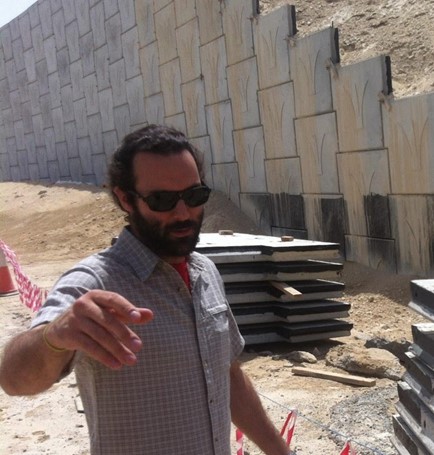< Geosynthetics International Volume 22, Issue 3 is now available!
Geosynthetics International Volume 22, Issue 3 is now available!
Articles include:
- Effect of high temperatures on the physical and mechanical properties of HDPE geomembranes in air
- Authors: F. B. Abdelaal; R. K. Rowe; Y. G. Hsuan; R. Awad
- ABSTRACT: The effect of elevated temperatures, particularly between 95 and 115°C as encountered in some geoenvironmental applications, on the physical and mechanical properties of high-density polyethylene (HDPE) geomembranes (GMBs) is examined. Four commercially available HDPE GMBs were incubated in air at temperatures ≥ 85°C. Investigation of the thermograms by differential scanning calorimetry showed a significant change in the polymer morphology with an increase of the incubation temperature and duration, especially at 105 and 115°C. The morphological changes due to annealing involve thickening of the lamella crystals of the polymer and a change in the tie molecules joining the lamella crystals. The effect of annealing was most evident in the stress crack resistance of the GMB incubated at 105 and 115°C prior to polymer degradation. In particular, an increase in stress crack resistance due to annealing could mask the effects of polymer degradation at temperatures above 95°C. Changes in morphology did not affect melt index whose changes were largely attributed to polymer degradation.
- Numerical analysis of centrally and eccentrically loaded strip footing on geotextile-reinforced sand
- Author: E. Sadoglu
- ABSTRACT: Geosynthetics have been proposed for use as a method of increasing the bearing capacity of a soil medium below a footing, and of reducing settlement. In this study, load-settlement behaviour of strip footings was investigated experimentally and numerically. The ultimate load of centrally and eccentrically loaded model strip footings resting on reinforced and unreinforced sand were determined under plane strain conditions. Sand was placed in a tank at a relative density of 0.74 to obtain general shear failure. Numerical simulation of the experimental set-up was carried out using Plaxis 2D software. Woven geotextile was used as the soil reinforcement. The Mohr–Coulomb material model was utilised to model the sand and load–settlement curves were obtained numerically. Using the reinforcement caused an increase in ultimate load in both numerical simulations and laboratory tests. The effect of changes in ultimate bearing capacity due to load eccentricity was investigated using both numerical and analytical methods.
- Experimental and analytical studies of geosynthetic tubes filled with expanded clay lightweight aggregate
- Authors: J. Górniak; P. Villard; C. Barral; Ph. Delmas; A. Want
- ABSTRACT: A new type of mechanically stabilised earth structure composed of geosynthetic tubes filled with expanded clay lightweight aggregate and backfill with geosynthetic reinforcement is introduced. The results of the study demonstrate that alternative solutions such as expanded clay lightweight aggregates can be used in interaction with geosynthetics in comparison to classical soil. The new type of geosynthetic tubes filled dynamically with expanded clay lightweight aggregate was tested in situ under compressive loading. The geosynthetic tube was instrumented with load cell transducers and the characteristic cross-section was obtained from three-dimensional scanner measurements after loading. Next, a simplified engineering formulation for geosynthetic tubes under compressive loading and unloading was evaluated including the influence of volume variation of the tube. It is based on the classical approach from soil mechanics and it produces the required design tensile force of the tube dependent on geosynthetic stiffness. The experimental results of compressive loading tests were compared with analytical equations. The results are discussed and show the influence of the geosynthetic stiffness on the behavior of the tube in terms of loading capacity, volume variation and cross-section of the tube. The agreement between theoretical analyses and experimental results was reasonably good and can be formally accepted for a given volume variation of the geosynthetic tube.
- Experimental studies of the behaviour of geosynthetic wrap around anchorage
- Authors: S. H. Lajevardi; D. Dias; L. Briançon
- ABSTRACT: When determining the dimensions of a geosynthetic lining system, it is important to have knowledge of the behaviour of the anchorage of the geotextile sheets. In order to optimise the geometry of the structures in question and then reduce the area taken up by the anchorage, anchorage solutions using trenches of varying forms are sometimes used. This paper focuses on two types of anchors (simple run-out and wrap around). The first author has previously performed some pull-out tests using an anchorage bench under controlled conditions using three types of geosynthetics and two types of soil. The results obtained from that study showed that there is an optimum length for the upper part of the geosynthetic for the wrap around anchorage. A more detailed analysis which describes the behaviour of a geosynthetic for the wrap around anchorage, the influence of the geosynthetic and of the soil types is presented herein.
- Direct shear behaviour of residual soil–geosynthetic interfaces – influence of soil moisture content, soil density and geosynthetic type
- Authors: F. B. Ferreira; C. S. Vieira; M. L. Lopes
- ABSTRACT: Soil–geosynthetic interface shear strength is an essential parameter for the design and stability analysis of geosynthetic-reinforced soil structures. Economic and environmental reasons have led to increasing use of locally available residual soils with a significant percentage of fines and lower draining capacity, when compared with the traditional good-quality backfill materials. This paper describes an extensive laboratory study carried out using a large-scale direct shear test device, in which the influence of soil moisture content, soil density and geosynthetic type on the direct shear behaviour of the soil–geosynthetic interface was evaluated. The study involved a locally available granite residual soil and four geosynthetics: two geogrids (one uniaxial and the other biaxial), one geocomposite reinforcement (high-strength geotextile) and one geotextile. Test results have revealed that the increase in soil moisture content can measurably reduce the soil–geosynthetic interface shear strength. Regardless of soil moisture content, soil density proved to have a remarkable influence on interface shear strength, particularly when geogrids were used. Among the different geosynthetics tested, the biaxial geogrid was found to be the most effective reinforcement for this particular type of soil, concerning the direct shear mechanism. For soil–geogrid interfaces, the coefficients of interaction ranged from 0.71 to 0.99. For soil–geotextile interfaces, the coefficients of interaction varied from 0.54 to 0.85.
- And More!
For IGS member free access to the journal please log in to the IGS website with your user name and password then click on Launch Geosynthetics International.






















